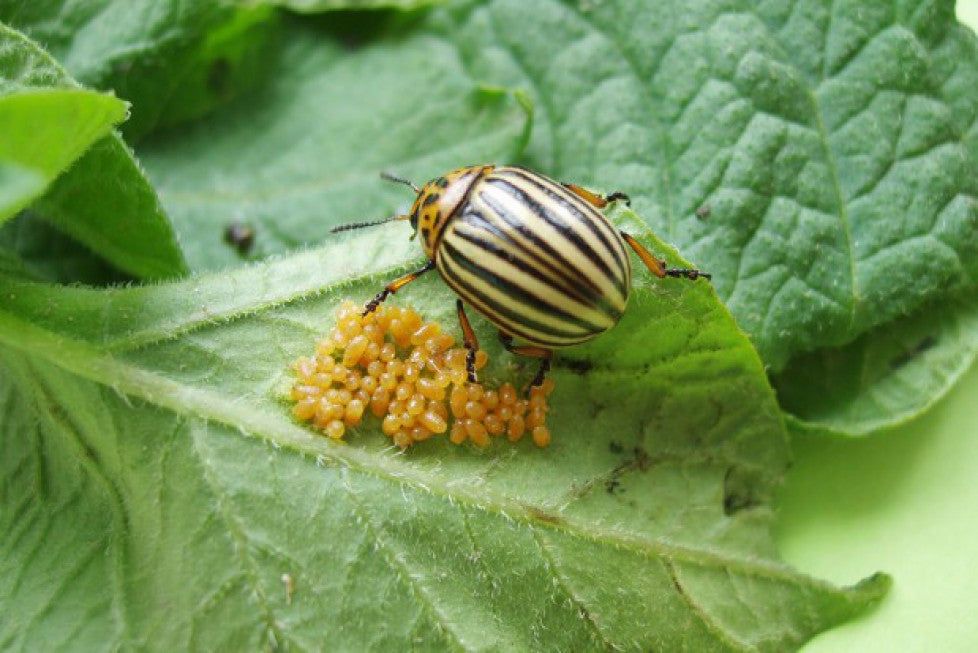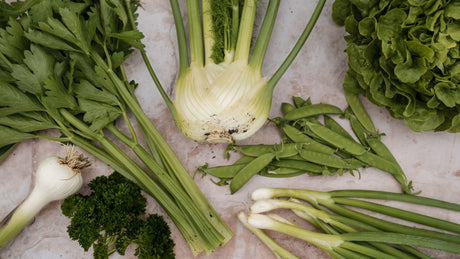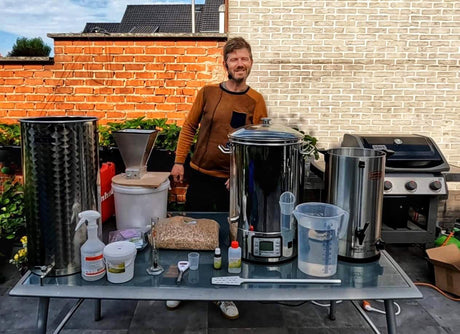Combating the Colorado potato beetle or potato beetle on your potato plants
Introduction to Colorado potato beetle control
Combating Colorado beetles, they are insects that target your plants from the nightshade family. The potatoes in your vegetable garden are one of their favourite plants that they devour, but the beetles also eat tomatoes , peppers , aubergines , paprika 's and horse nettles. Both the adult beetles and the larvae eat the leaves of these plants. Combating Colorado beetles is a priority for the vegetable gardener because of the variety of plants that the pest can affect. In Belgium and the Netherlands, it was previously mandatory to combat the Colorado beetle. Nowadays, the government no longer obliges you to do so. For example, the FAVV (Federal Agency for the Safety of the Food Chain) says: 'their eradication (...) is now considered unfeasible because they are widespread . In practice, however, it is important to continue to manage their populations because they can cause significant economic damage.' That is why it is important to know how to look for Colorado beetle toes, so that you can take action immediately.
 Recognizing the Colorado potato beetle
Recognizing the Colorado potato beetleHow to recognize the damage of the Colorado beetle
The damage to the potato foliage starts with small holes and grows into larger ragged spots. The damage to the leaves will reduce the growth power of your plant and therefore reduce the yield, which is of course not what we want. Preventing and possibly combating the Colorado beetle will increase your harvest and help prevent the laying of eggs and the return of this voracious insect the following season.
How do you recognize the Colorado beetle in the different growth phases?
What do the eggs of the potato beetle look like?
The females lay eggs on the leaves of the host plant, usually on the underside, protected from direct sunlight. The eggs of the Colorado potato beetles are bright orange. Overwintering adult beetles usually feed for five to 10 days before mating and producing eggs. In 'ideal conditions' it is estimated that females can lay 200 to 500 eggs. They use a yellowish adhesive to lay their eggs in clusters of 20 to 60 eggs. The eggs hatch after four to ten days, depending on the temperature and humidity. A new generation is unfortunately born. It is therefore important to regularly check the leaves of your potato plants for the orange eggs and to crush them. This prevents the eggs from hatching and therefore a new generation cannot be housed in your vegetable garden.
The larvae of the Colorado beetle
The larvae become visible in the last 12 hours before they hatch. They have a red hard body and a row of ridges on their humped back. The larvae also have a line of black dots along each side of their body. The reddish larvae of the Colorado potato beetle are round and are about a half inch long when fully grown. The larvae feed almost continuously on the leaves of your plants, stopping only when they start to molt. This also explains why Colorado potato beetles completely denude your potato plants. The larvae fall from the plants and burrow into the ground where they build a round cell and transform into yellowish pupae. This stage lasts for five to ten days.
The pupae of the potato beetle
Adult larvae burrow 2 to 5 cm into the ground, and begin to pupate after about two days. The pupae of the Colorado beetle are oval and orange-red in color. The average development time is about 6 days.
Recognizing an adult Colorado potato beetle
The adult beetles are about 1cm long and are yellowish-orange in colour and have several black stripes on their backs. The underside of the beetle and its legs are predominantly dark. The adult potato beetles burrow into the ground to a depth of a few centimetres and emerge in the spring. Then the whole cycle starts again. They feed on newly germinated plants from the Nightshade family and reproduce.
Be careful: don't confuse the Colorado beetle and the ladybug
Ladybug larvae eat a lot of Colorado beetle larvae. It is not yet entirely clear how they actually get rid of Colorado beetles, but it is clear that the ladybug deserves a place on our vegetable garden plants . Especially when you know that ladybugs also feed on aphids, spider mites and whitefly, for example. So do not confuse the two beetles. The eggs of the ladybugs are light yellow in color. The larvae of ladybugs are long and narrow and gray. They do not move and attach themselves to the leaf. When you tap your potato plants, the larvae of the Colorado beetle will drop from your vegetable garden plants to pupate underground, while the larvae of the ladybugs remain.
Prevent and/or treat Colorado potato beetles
How to prevent Colorado beetles?
Focus on biodiversity , grow as many different crops as possible in your vegetable garden. This will prevent soil fatigue in your vegetable garden, give you stronger plants and attract various insects that can be natural enemies of potential pests. Adult potato beetles hibernate in the ground and then crawl out to feed and lay eggs. Check the back of the leaves for the orange eggs and crush them to prevent a future generation of the pests. Another way to prevent Colorado potato beetles is to keep the beds free of waste that provides shelter for the adults. Keep your vegetable garden tidy. Remove old plants each season and work the vegetable bed. Do not plant nightshade plants in the same place every year, but alternate them to prevent them from growing in places where the insects already live.
How to control Colorado beetles?
Only when the above preventive tips were not sufficient, or the damage is too great, we will proceed to control. Be aware that you do not obtain biodiversity from one day to the next. It is therefore important when you design your vegetable garden that you immediately make choices in function of biodiversity.
Ecological control of Colorado beetles
To combat the Colorado beetle ecologically, you can do a number of things. You can remove many beetles by picking them off by hand. If you discover the creatures at an early stage, a beetle hunt can save your crop for a few days. You can also use useful insects or natural enemies. Nematodes, also called nematodes, are natural enemies of the Colorado beetle. As soon as it is warm enough (10°C), spread the nematodes over your garden. There are handy distributors that fit on your garden hose . You will not see the nematodes yourself. Mix them with water according to the instructions and spread over the foliage of your potato plants, both at the top and bottom (since the eggs are laid there). It is best to apply nematodes in the evening. Nematodes cannot tolerate sunlight. In addition, the leaves of the plants must remain moist for a few hours. An interesting tip : If you have had to deal with a large beetle infestation, consider treating your bed with nematodes after the harvest. This is how you work preventively for next year.
When do you resort to chemical control of the Colorado potato beetle?
The preference remains of course to work preventively as described above. Start by estimating the damage of the plague. In your estimation you can ask yourself three questions.
A first question: 'How far am I in the cultivation or how far am I from the harvest?
The later in the crop the pest occurs, the better your chances of saving your plant. Early in the crop you need to combat the Colorado beetles to still be able to count on a harvest. If the pest occurs late in your crop, your potatoes may already be big enough (check) and you can avoid chemical control.
A second question: How extensive is the damage?
A turning point here is when more than 50% of your foliage is affected, it becomes more difficult to guarantee a good harvest. Your plants need the foliage to grow. If the foliage of your plant is eaten away for more than 75%, consider not treating anymore and removing your plant completely from your vegetable garden. The chance that you will still get the beetle plague under control is quite small. The risk here is also very high that the beetles will move to other plants in your vegetable garden to eat their bellies full and, worse, reproduce again.
A third question: How many Colorado beetles are on your plant?
Insecticides should only be used when the infestation is severe and there is more than one insect per plant. As mentioned earlier, try to catch them preventively first instead of spraying immediately. There are various sprays to kill the Colorado potato beetle. Timing is an important consideration to get rid of the maximum number of insects. Small larvae are easier to control than full-grown larvae. Adult Colorado potato beetles have a hard shell and are very difficult to control. Therefore, spray when the larvae have just hatched in the spring. Repeat 2 to 3 weeks after treatment. Use crop protection products safely. Before use, always read the label and product information and follow the precautions.  Conserve Garden (waiting time for harvest 7 days)
Conserve Garden (waiting time for harvest 7 days)
Finally
As we always try to achieve, a vegetable garden rich in biodiversity is the best remedy against harmful insects such as the Colorado or potato beetle. Certain plants or shrubs attract ladybugs such as garlic, parsley, marigolds , coriander, dill , marigold , alyssum or snow blanket, parsley, dandelions, butterfly bush, ... So try not only to grow crops to eat but also think of plants that attract various beneficial insects. I hope you found this article useful. If you find the information from Moestuinweetjes valuable, then definitely consider purchasing your vegetable garden supplies in our webshop . For your first purchase, you can use the discount code biomoestuin for a 5 euro discount on your shopping cart. We also reward returning customers with a discount code moestuinspullen , which gives a 5 euro discount at checkout for a purchase of more than 50 euros. Good luck in your vegetable garden, Sarah












